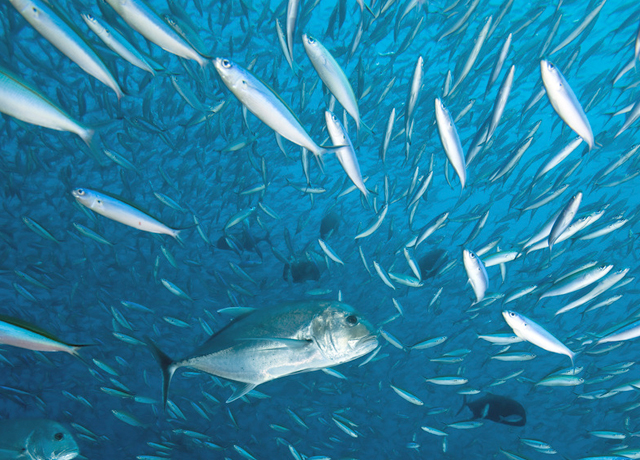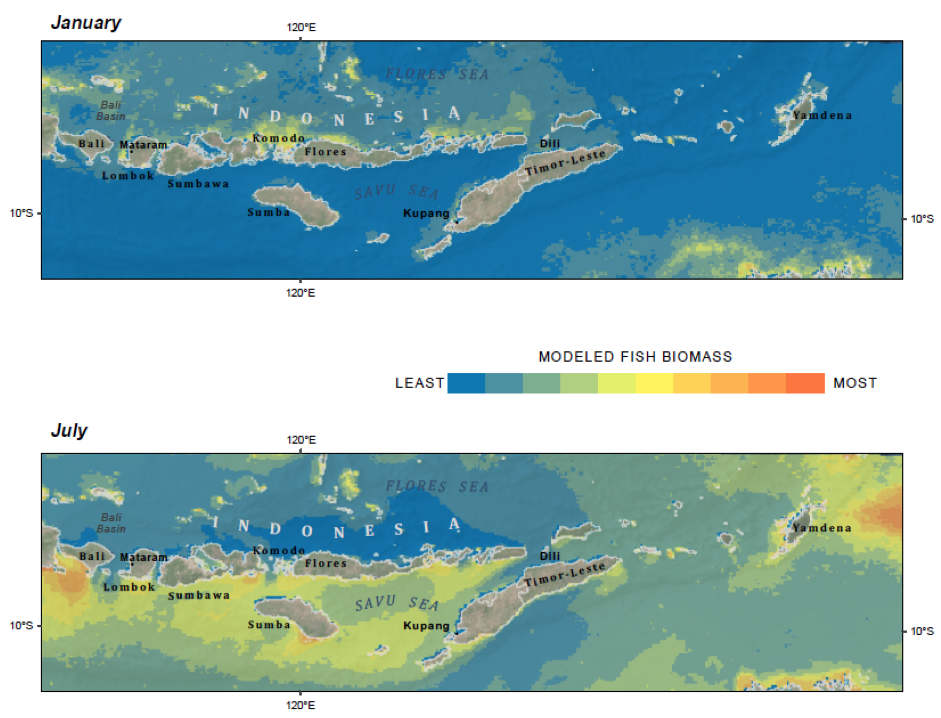
Habitats: Offshore Pelagic Ecosystems, Mangroves
Benefits: Fisheries, Coastal Protection
Projects and Places: Lesser Sunda Ecoregion Fish Production, MSP/MPA Network Design
As the world’s fourth most populous nation, Indonesia depends highly upon protein from the ocean to feed its population. It also has a rapidly growing economy fueled in part by the extraction of marine resources. The Indonesian government’s focus on development put a lot more emphasis on building the country’s maritime infrastructures, quadrupling its fishery production by 2019, and increasing the number of foreign tourists by more than two fold in 2019. Without sound information and decision-making tools that allow for consideration of ecosystems services values, attaining these ambitious development goals can threaten Indonesia’s rich marine resources and its highly diverse ecosystems.
Mapping Ocean Wealth helps inform Indonesia’s marine management and address the nation’s conservation priorities.
Projects and Places
Photo Credits (top image and in text): © Jeff Yonover


